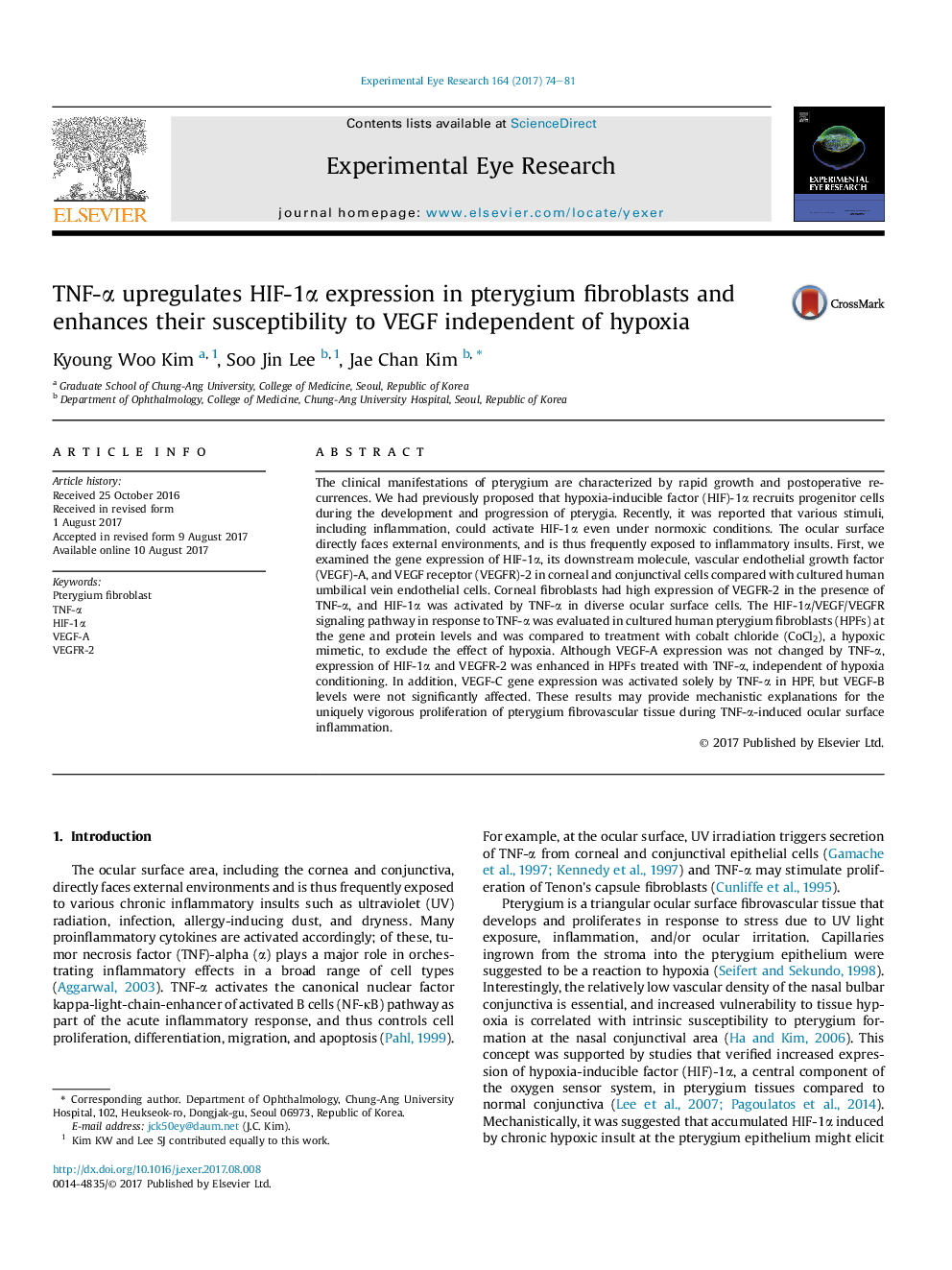| Article ID | Journal | Published Year | Pages | File Type |
|---|---|---|---|---|
| 5703982 | Experimental Eye Research | 2017 | 8 Pages |
Abstract
The clinical manifestations of pterygium are characterized by rapid growth and postoperative recurrences. We had previously proposed that hypoxia-inducible factor (HIF)-1α recruits progenitor cells during the development and progression of pterygia. Recently, it was reported that various stimuli, including inflammation, could activate HIF-1α even under normoxic conditions. The ocular surface directly faces external environments, and is thus frequently exposed to inflammatory insults. First, we examined the gene expression of HIF-1α, its downstream molecule, vascular endothelial growth factor (VEGF)-A, and VEGF receptor (VEGFR)-2 in corneal and conjunctival cells compared with cultured human umbilical vein endothelial cells. Corneal fibroblasts had high expression of VEGFR-2 in the presence of TNF-α, and HIF-1α was activated by TNF-α in diverse ocular surface cells. The HIF-1α/VEGF/VEGFR signaling pathway in response to TNF-α was evaluated in cultured human pterygium fibroblasts (HPFs) at the gene and protein levels and was compared to treatment with cobalt chloride (CoCl2), a hypoxic mimetic, to exclude the effect of hypoxia. Although VEGF-A expression was not changed by TNF-α, expression of HIF-1α and VEGFR-2 was enhanced in HPFs treated with TNF-α, independent of hypoxia conditioning. In addition, VEGF-C gene expression was activated solely by TNF-α in HPF, but VEGF-B levels were not significantly affected. These results may provide mechanistic explanations for the uniquely vigorous proliferation of pterygium fibrovascular tissue during TNF-α-induced ocular surface inflammation.
Related Topics
Life Sciences
Immunology and Microbiology
Immunology and Microbiology (General)
Authors
Kyoung Woo Kim, Soo Jin Lee, Jae Chan Kim,
